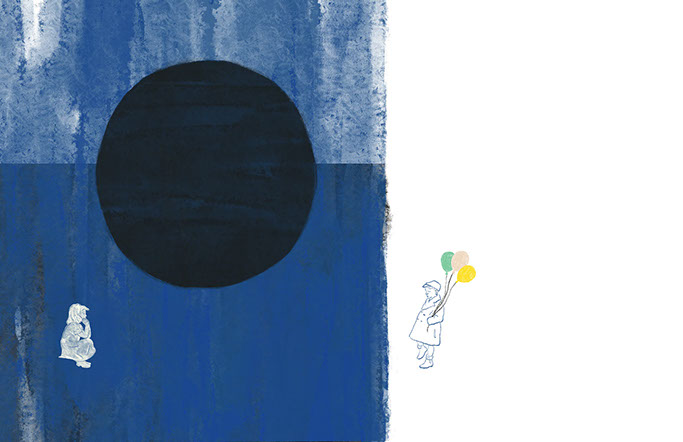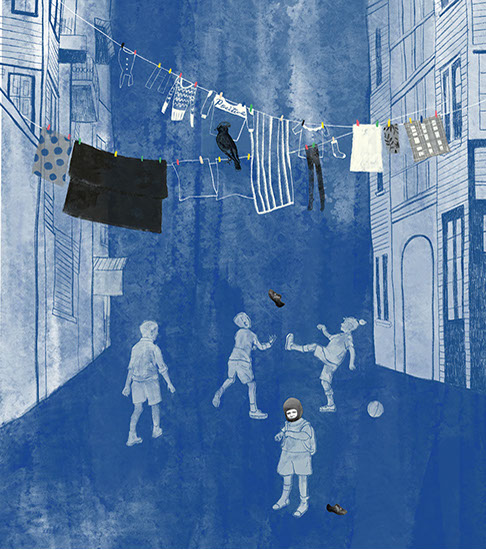Nurturing the Seed of Infinite Potentialities in Every Child

What is empathy? How do I make sure my child grows up to be a kind person? Read on to find out why empathy for
others is an important part of a child’s
development.
Imagine you are in a play-ground with your 3-year-old child who is playing with other children. One of the children falls and starts to cry and your child stops playing and starts to cry too. Should you be worried?
In this scenario, the answer is no, because your child is showing early signs of empathy. In time, they will develop empathy for others, allowing the child to display kindness towards others as they grow.
By DR. MELIS YAVUZ-MÜREN

What is Empathy
for Others?
Empathy for others occurs when we feel with another. This includes feelings of concern for another, especially when the other is in distress. Empathy for others is different from empathy which occurs when we feel the same emotion as the other. It expands upon this to include the feelings of concern that we feel for others when we recognize and understand their feelings of distress.
These feelings of concern can inspire action on our end. For example, upon seeing another child fall down, your child might feel sad themselves and stop playing. That would be an indicator of empathy.
However, if your child sees them fall and tries to comfort them by offering a toy, that is a display of empathy for others. As such, empathy for others is vital for promoting compassion and positive social behaviors across development.
Empathy is…
Feeling the same emotion as another
Empathy for others is …
Feeling concern and sadness upon another’s distress
Empathy for
others requires:
- Understanding that the self is different from others and that others can have different mental states, including different emotions
- Understanding the emotions and, to some extent, inner states of others
- Having feelings of concern for others in distress
- The capacity to manage one’s own feelings of personal distress
Empathy for others has two components that develop at different rates: the emotional component and the cognitive component.
Component
Emotional Component
Cognitive Component
Explanation
Example
• Involves feeling the same emotion as another person
• Develops in infancy, around 8 to 14 months
• Does not require the infant or child to understand the source or cause of another’s emotion(s)
• Involves the ability to understand and evaluate another‘s perspective and emotional states
• Develops later, from early to middle child-hood along with rapid brain development
• A child becomes sad when they see another child cry.
• A 4-year-old may feel sadness and concern when they hear another child in distress and may also recognize that that child is in distress because they just fell down.
Development of Empathy for Others:
What to Expect When
While the emotional component of empathy emerges very early in life, it takes more time for the cognitive component to develop.
Empathy for others is aided by the following two abilities:
1. Perspective-Taking (also referred to as Theory of Mind): refers to stepping into someone else’s shoes by recognizing them as distinct individuals with their own thoughts, feelings, and needs
2. Emotion Regulation: refers to our ability to manage our emotions in order to achieve goals and respond appropriately in different situations
Component
Infancy
(0–2 years)
Preschool years
(3–4 years)
Middle childhood
(5–8 years)
Explanation
Example
• The first signs of the emotional component of empathy emerge.
• Infants are sensitive to the emotions of those around them and will often mimic others’ emotions.
• At around 8 to 14 months, infants react to the distress of others with negative emotions.
• The cognitive component of empathy for others emerges during the preschool years as the ability to understand others’ perspectives (i.e., perspective-taking) develops.
• Children start to develop the understanding that their mental states (e.g., feelings, desires, emotions) can be different from others. This ability helps them understand the distinct feelings of others, the reasons for these feelings, and the ideal way to facilitate more positive feelings within others.
• The development of other socio-cognitive skills, including an increased capacity for understanding other’s emotions and improved emotion regulation skills, also facilitates the development of cognitive empathy during the preschool years.
• As perspective-taking and emotion regulation continue to develop, and children grow an increasingly complex understanding of different emotions in themselves and others, empathy for others continues to increase through middle childhood.
• As they age, children become better at reading others’ feelings through their actions, gestures, body language, and facial expressions — all of which will be helpful in establishing empathy for others.
• An infant cries upon hearing the cry of another infant.
• When trying to comfort another child in distress, a 2-year-old might give them their own favourite plush toy, whereas in later years, they will bring the other child’s favourite toy.
• Seeing another child crying might make the child feel sad as well, potentially producing intense negative emotions and personal distress. Better emotion regulation skills help children manage this personal distress and, in turn, create more space for them to experience empathy for others.
• A 7-year-old sees someone being bullied by other children. Having a higher empathy for others would increase the chances that the child would defend the victim, and include the victim in future interactions.
Why is it Important to Promote Empathy for Others?

Empathy for others is a core component of positive social interactions with others. Research at our centre and in laboratories worldwide show that when children have higher empathy for others, they are more prosocial — meaning they are more inclined to help, comfort, cooperate, and share with others. Since empathy for others requires understanding the emotions of someone else who is distressed and feeling concern for them, children are motivated to react more benevolently and subsequently engage in prosocial behaviours.
Importantly, children who feel more empathy for others have been shown to display more positive social behaviours in childhood and in later years. For example, the research conducted in our lab has found that throughout early and middle childhood (4- 8-years old), children who display more empathy for others show more prosocial behaviours (e.g., Malti et al., 2016; Song et al., 2018). Since empathy for others develops over time, it is important to detect the early signs and promote empathy for others in early childhood and beyond to promote kindness within our communities and societies. But what can we do to promote empathy for others? To learn more about what you can do to promote empathy for others in children, you can read Dr. Ruthie Speidel’s article next!
